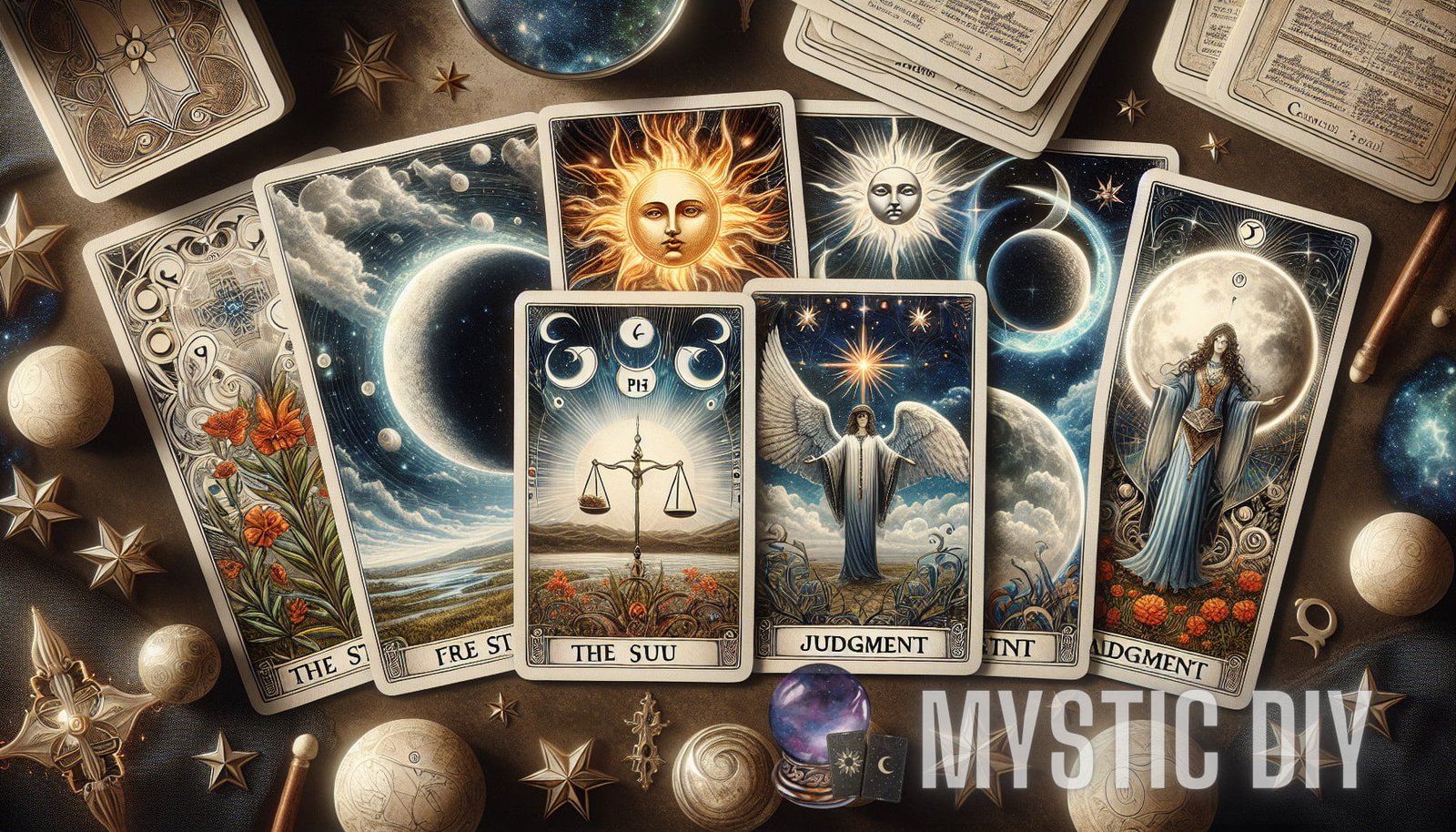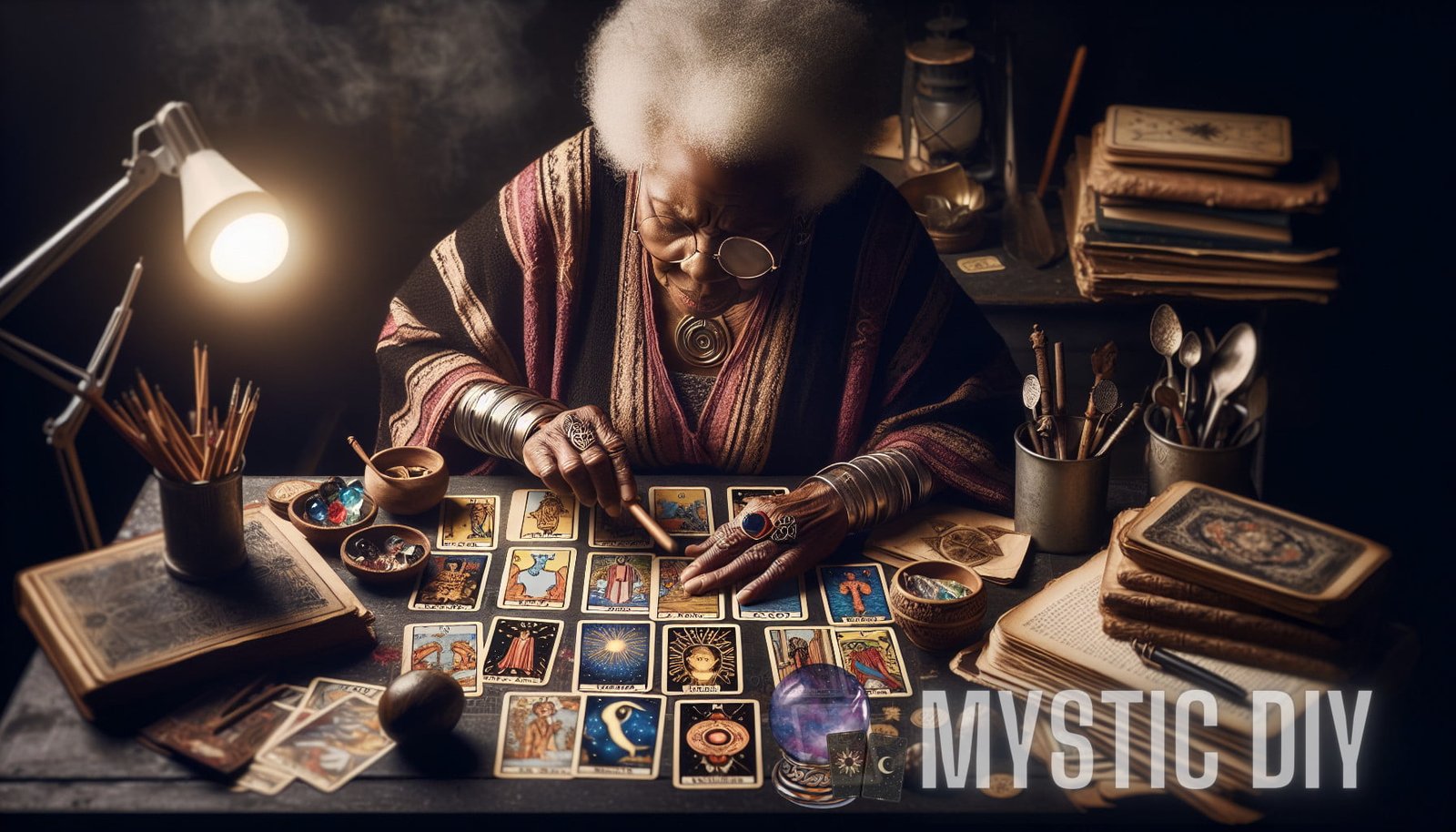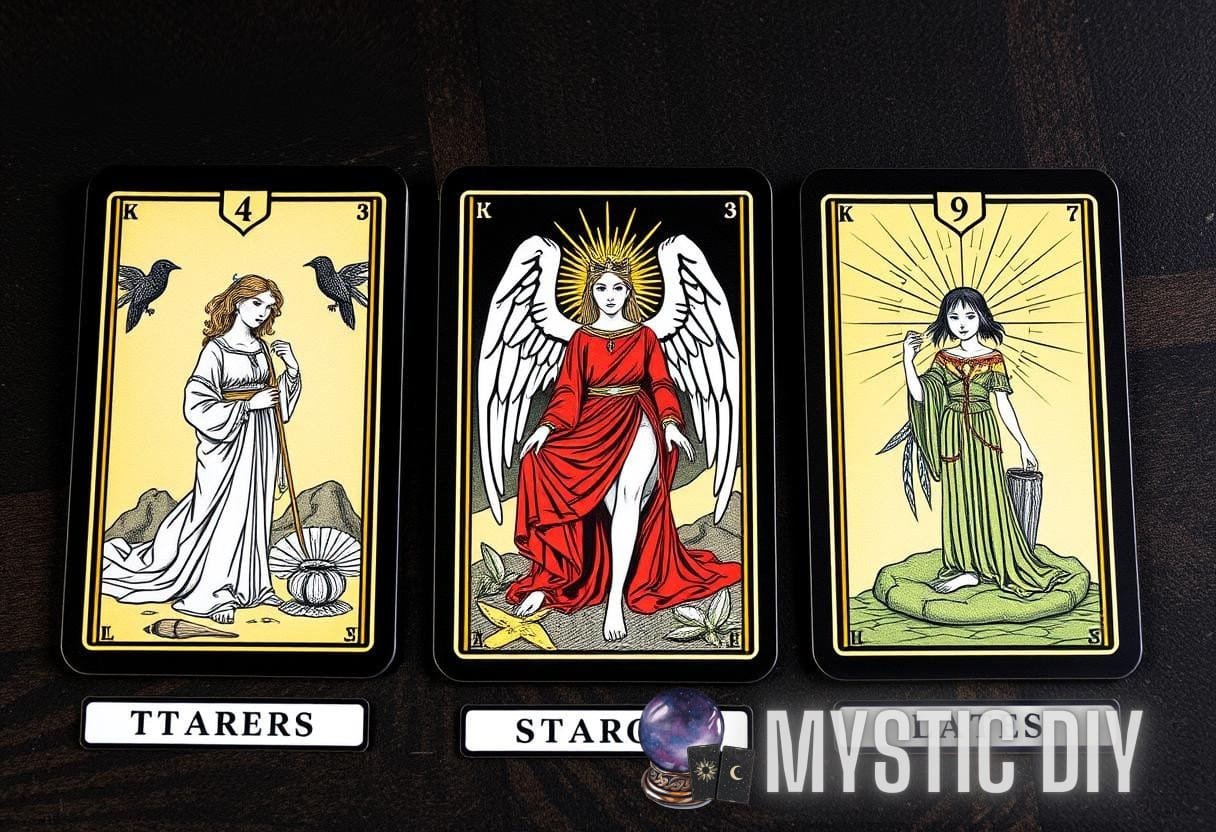Introduction
The Tarot Card Chronicles: Expanding the Boundaries of Symbolic Interpretation is an in-depth exploration of the world of tarot cards and their symbolic meanings. Tarot cards have been used for centuries as a powerful tool for divination and self-reflection. In this guide, we will delve into the history of tarot, the significance of its symbols, and the ways in which the interpretation of the cards has evolved over time. Whether you’re a tarot enthusiast or simply curious about this ancient practice, this guide will provide you with a comprehensive understanding of the tarot card chronicles.
Table of Contents
- The Origins of Tarot
- The Structure of Tarot Decks
- The Major Arcana
- The Minor Arcana
- The Symbolism of Tarot Cards
- Interpreting Tarot Cards
- Expanding the Boundaries of Symbolic Interpretation
- Tarot Card Reading Techniques
- Tarot Card Spreads
- The Future of Tarot
1. The Origins of Tarot
The origins of tarot cards can be traced back to the 15th century in Europe. While the exact origins are still a subject of debate among scholars, most agree that tarot cards were initially used as playing cards in parts of Italy and France. It wasn’t until the 18th century that tarot cards began to be associated with divination and esoteric practices. The tarot deck as we know it today, consisting of 78 cards, was developed during this time.
The first recorded use of tarot cards for divination purposes can be found in the late 18th century, when a French occultist named Jean-Baptiste Alliette, who went by the pseudonym Etteilla, published a book on tarot card readings. His work laid the foundation for modern tarot card interpretations. Since then, tarot has continued to grow in popularity and has become one of the most widely recognized forms of divination.
Embedding internal link to an article on tarot symbolism. Click here to learn more about tarot symbolism.2. The Structure of Tarot Decks
Tarot decks consist of 78 cards, divided into two main categories: the Major Arcana and the Minor Arcana. The Major Arcana consists of 22 cards, each representing a significant life event or archetype. The Minor Arcana consists of 56 cards, divided into four suits: Wands, Cups, Swords, and Pentacles. Each suit contains ten numbered cards (Ace through Ten) and four Court Cards (Page, Knight, Queen, and King).
The Major Arcana cards are often considered the most powerful and influential cards in a tarot deck. They represent major life stages, lessons, and transformative experiences. The Minor Arcana cards, on the other hand, represent more day-to-day experiences and challenges.
2.1 The Major Arcana
The Major Arcana cards are often depicted with powerful images that evoke a sense of mystery and depth. Each card in the Major Arcana carries its own unique symbolism and significance. Some of the most well-known cards in the Major Arcana include:
- The Fool
- The Magician
- The Empress
- The Lovers
- The Chariot
- Justice
- The Hermit
- Death
- The Devil
- The Tower
- The Star
- The Moon
- The Sun
- Judgment
- The World

These cards represent significant life events and themes, such as new beginnings, personal power, love and relationships, and spiritual growth. Each card can be interpreted in multiple ways, depending on the context of the reading and the intuition of the reader.
2.2 The Minor Arcana
The Minor Arcana cards are divided into four suits: Wands, Cups, Swords, and Pentacles. Each suit represents a different aspect of life and carries its own set of meanings and interpretations. The suits are often associated with the four elements: Wands with fire, Cups with water, Swords with air, and Pentacles with earth.
Each suit contains ten numbered cards and four Court Cards. The numbered cards represent various situations and experiences, while the Court Cards represent different personalities or archetypes. The Court Cards often depict individuals of different ages and gender, representing different aspects of our personalities or people in our lives.
3. The Symbolism of Tarot Cards
The symbols depicted on tarot cards play a crucial role in their interpretation. The symbols can include animals, plants, objects, and geometric shapes, among others. These symbols carry deep meanings and can provide valuable insights into the messages contained within the cards.
The interpretation of symbols on tarot cards can vary depending on the deck being used and the reader’s personal understanding and intuition. However, certain symbols have established meanings that are widely recognized and accepted within the tarot community.
Some common symbols found in tarot decks include:
- The sun, representing enlightenment and clarity
- The moon, symbolizing intuition and the subconscious mind
- The star, representing hope and guidance
- The tower, symbolizing the destruction of old structures to make way for new beginnings
- The fool, representing a sense of adventure and taking risks
- The snake, symbolizing transformation and healing
- The lion, representing strength and courage
- The eagle, symbolizing power and spiritual growth
- The scales, representing balance and justice
- The key, symbolizing unlocking hidden knowledge and secrets
These symbols, among many others, contribute to the rich tapestry of meanings embedded within the tarot cards.
Embedding internal link to an article on tarot transformation. Click here to learn more about tarot transformation.4. Interpreting Tarot Cards
Interpreting tarot cards is both an art and a science. It requires a deep understanding of the symbols and their meanings, as well as intuition and personal connection with the cards. There are various approaches to interpreting tarot cards, and each reader may have their own unique style.
When interpreting tarot cards, it is important to consider the cards’ individual meanings, their position within a spread, and the overall energy and context of the reading. The relationship between the cards in a spread can provide additional insights and nuances to the interpretation.
Tarot card readings can be done for oneself or for others. Many people seek the guidance of professional tarot card readers to gain clarity and insight into various aspects of their lives, including relationships, careers, and personal growth.
5. Expanding the Boundaries of Symbolic Interpretation

As tarot has grown in popularity, so too has the interpretation of its symbols expanded. Tarot card readers have started to incorporate diverse cultural and mythological references into their interpretations, allowing for a broader and more inclusive understanding of the cards.
In addition to traditional interpretations, some readers have also developed their own unique systems and approaches to tarot card readings. These approaches may include combining different schools of thought, such as astrology or numerology, with tarot symbolism to provide a deeper and more personalized reading.
Tarot card readers have also begun to explore the intersections between tarot and other spiritual practices, such as crystal healing, chakra balancing, and energy work. These integrative approaches allow for a holistic understanding of the cards and their connection to wider metaphysical concepts.
6. Tarot Card Reading Techniques
There are various techniques and methods that tarot card readers use to conduct readings. Some of the most common techniques include:
- One-Card Reading: A simple and quick reading that provides insight into a specific question or situation.
- Three-Card Spread: A versatile spread that can provide insight into the past, present, and future of a situation or question.
- Celtic Cross Spread: A more complex spread that offers a detailed analysis of a situation or question, taking into account multiple factors and influences.
- Astrological Spread: A spread that incorporates astrological principles and positions of celestial bodies to gain deeper insights into the reading.
- Relationship Spread: A spread specifically designed to provide insights into relationships and interpersonal dynamics.
- Year Ahead Spread: A spread that focuses on the upcoming year, providing guidance and insights into the challenges and opportunities that may arise.
These techniques, along with many others, give readers a wide range of options for conducting tarot card readings.
7. Tarot Card Spreads
Tarot card spreads are configurations of cards that are used to determine the placement of the cards and their relationship to one another. Each spread has a specific purpose and is used to answer different types of questions or gain insights into specific areas of life.
Some popular tarot card spreads include:
- The Past, Present, Future Spread: This spread uses three cards to provide insights into the past, present, and future of a situation or question.
- The Celtic Cross Spread: This is one of the most widely used spreads in tarot card readings. It consists of ten cards, each representing different aspects of the situation being examined.
- The Relationship Spread: This spread is used to explore the dynamics and challenges within a relationship. It can provide insights into areas such as communication, trust, and mutual growth.
- The Decision-Making Spread: This spread is designed to help individuals gain clarity and make informed decisions. It provides insights into the potential outcomes and consequences of different choices.
- The Year Ahead Spread: This spread is used to gain insights into the upcoming year. It can provide guidance on what to expect, areas to focus on, and potential challenges and opportunities.
Tarot card spreads are powerful tools that can enhance the accuracy and depth of tarot card readings.
8. The Future of Tarot
As tarot continues to gain popularity and evolve, its future remains bright. Modern technology has made tarot more accessible than ever, with many tarot card readers offering online readings and tarot apps becoming increasingly popular.
In addition to technological advancements, the understanding and acceptance of tarot as a legitimate form of self-reflection and divination are also growing. Tarot is no longer seen as a fringe practice but has gained recognition and respect within the broader spiritual community.
As more people embrace tarot and incorporate it into their lives, the boundaries of interpretation and the ways in which tarot is used will continue to expand. Tarot will likely continue to intersect with other spiritual practices and evolve to meet the unique needs and preferences of individuals.
In conclusion, The Tarot Card Chronicles: Expanding the Boundaries of Symbolic Interpretation provides a comprehensive exploration of the world of tarot cards, their symbolism, and the evolving interpretation of the cards. Tarot is a powerful tool for self-reflection, personal growth, and divination. By understanding the history, structure, and symbolism of tarot cards, as well as the various techniques and spreads used in tarot card readings, individuals can gain valuable insights into their own lives and navigate their journeys with clarity and wisdom.



